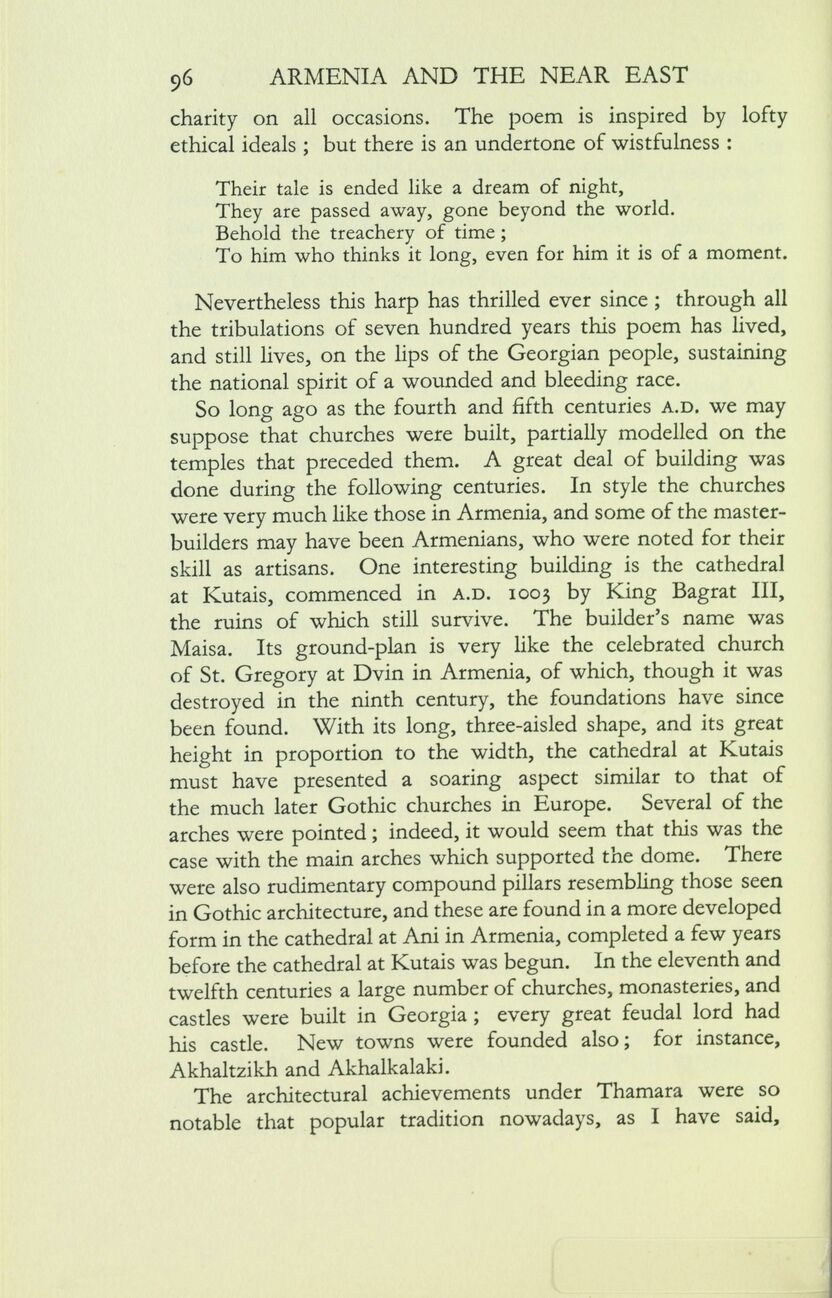
Full resolution (JPEG) - On this page / på denna sida - IV. Chapters in the history of Georgia

<< prev. page << föreg. sida << >> nästa sida >> next page >>
Below is the raw OCR text
from the above scanned image.
Do you see an error? Proofread the page now!
Här nedan syns maskintolkade texten från faksimilbilden ovan.
Ser du något fel? Korrekturläs sidan nu!
This page has never been proofread. / Denna sida har aldrig korrekturlästs.
ARMENIA AND THE NEAR EAST
96
charity on all occasions. The poem is inspired by lofty
ethical ideals ; but there is an undertone of wistfulness :
Their tale is ended like a dream of night,
They are passed away, gone beyond the world.
Behold the treachery of time ;
To him who thinks it long, even for him it is of a moment.
Nevertheless this harp has thrilled ever since ; through all
the tribulations of seven hundred years this poem has lived,
and still lives, on the lips of the Georgian people, sustaining
the national spirit of a wounded and bleeding race.
So long ago as the fourth and fifth centuries a.d. wc may
suppose that churches were built, partially modelled on the
temples that preceded them. A great deal of building was
done during the following centuries. In style the churches
were very much like those in Armenia, and some of the master
builders may have been Armenians, who were noted for their
skill as artisans. One interesting building is the cathedral
at Kutais, commenced in a.d. 1003 by King Bagrat 111,
the mins of which still survive. The builder’s nåme was
Maisa. Its ground-plan is very like the celebrated church
of St. Gregory at Dvin in Armenia, of which, though it was
destroyed in the ninth century, the foundations have since
been found. With its long, three-aisled shape, and its great
height in proportion to the width, the cathedral at Kutais
must have presented a soaring aspect similar to that of
the much later Gothic churches in Europe. Several of the
arches were pointed ; indeed, it would seem that this was the
case with the main arches which supported the dome. There
were also rudimentary compound pillars resembling those seen
in Gothic architecture, and these are found in a more developed
form in the cathedral at Ani in Armenia, completed a few years
before the cathedral at Kutais was begun. In the eleventh and
twelfth centuries a large number of churches, monasteries, and
castles were built in Georgia ; every great feudal lord had
his castle. New towns were founded also; for instance,
Akhaltzikh and Akhalkalaki.
The architectural achievements under Thamara were so
notable that popular tradition nowadays, as I have said,
<< prev. page << föreg. sida << >> nästa sida >> next page >>